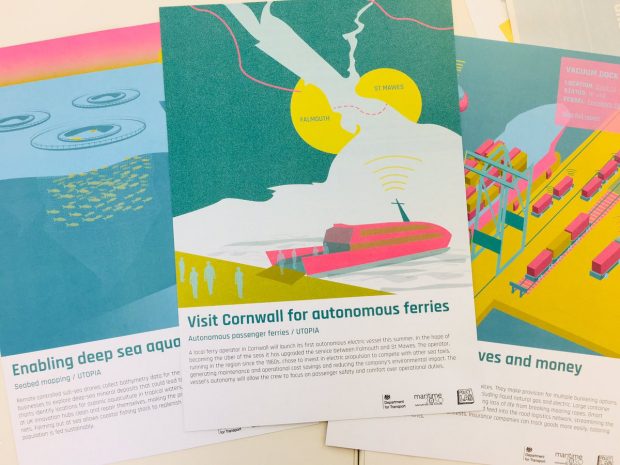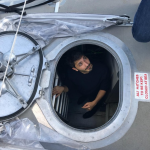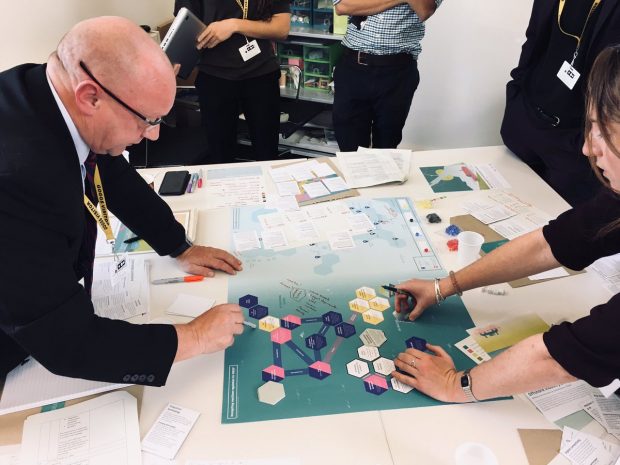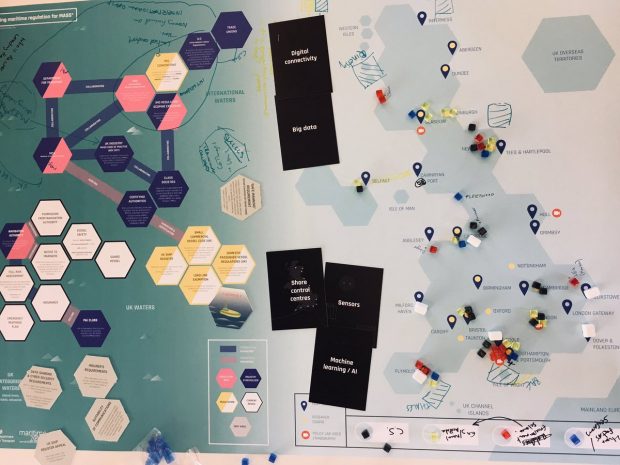As a child, my mum used to tell me that I always learnt the ‘hard way’. By that she meant I learnt by doing - sometimes in spite of what I might have been told. It follows that I ended up studying 3D design, using tangible objects and experiences to develop and communicate ideas. But back then I don’t think I ever imagined this could be relevant to government.
Policy Lab has built a reputation for experimenting and stretching the scope of policy making across government by mixing up the three main learning styles - auditory, visual, and kinaesthetic. Where the written and spoken word is relied upon heavily for accurately conveying concepts; visual, tactile and experiential methods are proving useful approaches to help policy makers explore the more uncharted waters of their work - whilst at the same time engaging wider audiences and capturing the imagination.
Drawing on examples from the Lab’s recent work with the Department for Transport’s (DfT) Maritime Technology team, this blog post will reflect on how a more kinaesthetic - learning through doing - design approach might be adopted at different stages in the policy making process. Our brief was to help the policy team shape their future vision and technology strategy through a series of consultation workshops with key stakeholders.
Discovery: prototyping as user research
Typically the discovery phase of a design project is when the net is cast out to understand the current landscape and its users, gathering insights and identifying opportunities for intervention. It’s the research phase: exploring, listening and being open to receive information. However, there can also be an opportunity to add in some more active doing, or ‘early-stage prototyping’, with the potential to accelerate and enrich the research process. It might seem premature to jump to solutions before fully completing research, but it can be an engaging way to test assumptions and elicit deeper insights from users.
We used this approach for the maritime consultations by designing a visually provocative, speculative series of utopian and dystopian visions of the future to probe stakeholders on how different aspects of the UK maritime industry could play out in the near future. Each stakeholder was given one of these visual prototype ‘vision cards’ to reveal in turn, prompting discussions around specific policy areas, form the impact of ‘smart’ ports and autonomous passenger ferries, to cyber security threats and the potential impacts of seabed mapping.

Although the visions didn’t always resonate with everyone around the table, the act of revealing these visualised future scenarios certainly stimulated debate, effectively testing how the policy team's proposed vision and strategy might be received.
Vasant and Camilla Buchanan have also written about other examples of this early-stage prototyping in their previous posts, and Stephen’s recent post highlights the potential for speculative design in policy making.
Communication: immersive research as a communication tool
It’s not always practical to bring all stakeholders to the frontline of research for a fully immersive, 'learning by doing' experience, but Policy Lab finds that by curating their own video ethnography in collaboration with policy teams, policy makers and stakeholders can be bought much closer to citizens. Compared to written or even visual research reports, playing back personal lived experiences into the policy making process has provided rich insights for policy teams to learn from.

The Lab's collaborative work with the Maritime Technology team took a feet-first approach to researching the emerging technology landscape. Following desk research and foresight from the Government Office for Science, Sanjan headed out with the policy team to experience first-hand a small autonomous sea-going vessel called ’Sea-Kit’ currently being used for seabed mapping in Norway. Meanwhile, Kyna, Policy Lab’s in-house video ethnographer, visited ports across the UK from Grimsby to Glasgow to capture the perspectives of people currently working in the industry.
These valuable first-hand insights from people at the front-end of policy decisions were edited together and shared with stakeholders at the beginning of each consultation workshop. They provided a highly engaging introduction and helped to set the context for the activities that followed.
Ideation & testing: policy co-design through simulation
Smarter policy though simulation was one of Nesta’s top ten predictions for 2018, and it turns out they weren’t wrong. Co-designing and testing things as intangible as visions and strategies is challenging, but introducing a more tactile dimension to this stage of the policy making process can help to articulate and iterate ideas in a group of stakeholders. The military have long used war-games to help anticipate and simulate non-linear dynamics. Conversely, in the 1960s, design visionary Buckminster Fuller inverted the traditional competition mindset of political gaming, with his World Peace Game to explore routes to international peace through cooperation. These concepts are now re-emerging through collaborative foresight games such as IMPACT designed for the Canadian government and the 2030s SDG Game developed in Japan as a reaction the the UN’s sustainable development goals.
With all this in mind, we developed a tabletop activity as a type of co-design tool for the consultations, to explore how multiple variables - technology, regulation and skills - combined with different stakeholder perspectives might influence a national vision and strategy for the maritime industry.
Dubbed the ‘Shipping Forecast’, the aim of the activity was for the stakeholders to deliberate their visions and play out their strategies together, using the activity board, vision and technology cards, and playing pieces we had designed. Led by a Lab facilitator, the open and dynamic format allowed the policy team to observe the activity play out and conversations, comparing notes with their proposed policy. The positive feedback from stakeholders at the end of the each consultation activity was testament to how an tactile, simulation approach to co-designing policy can add value for both policy teams and their stakeholders.

These are just a few examples of how ‘doing’, and taking a more kinaesthetic approach to design in policy making, through speculative prototyping, immersive research, and simulation, can be valuable for policy makers, their stakeholders and citizens. I’m excited to see what Policy Lab comes up with next!

1 comment
Comment by Amy France posted on
For the projects mentioned are there examples of the public facing consultations that are available to view? Would love to know how the visions were received and if it created higher quality responses.